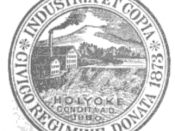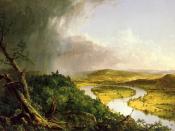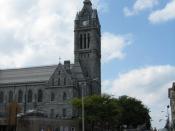The city of Holyoke is situated in the mid-western portion of Massachusetts . At one time, nearly 15,000 years ago, this area was situated at the bottom of an area of water known as Lake Hitchcock. Over time, the waters receded, leaving a double legacy--the alluvium rich soils which have supported a long history of agriculture in the Connecticut Valley, and the Connecticut River itself, the original motor of economic progress in the region. It is from this river that a city would be born.
It is believed that Captain Elizur Holyoke was the first European to explore Holyoke, Massachusetts. In 1633, Captain Elizur lead a daring expedition up the Connecticut River to explore the potential for settlement. Two years later, based upon his encouraging report, European agriculture settlement began in the region. Initially concentrated in Springfield, Massachusetts, settlers soon began to migrate to the surrounding areas that would later become the towns of Holyoke, West Springfield and Chicopee.
Holyoke was then known as "Ireland Parish" due to the many Irish immigrants who settled in this area. It is a name that would be in common use until 1850.
Industrial investment and the corresponding growth in population, housing and employment began in the first half of the 19th century. Once entrepreneurs realized Western Massachusetts could be as profitable as the coastal areas of Massachusetts, they set out to plan and create an industrial city on a scale never seen before.
Power For The "New City"
On November 6, 1848, the first of three dams was completed at the South Hadley Falls, which divided Holyoke and South Hadley, Massachusetts. Made of wood and financed by Boston industrialists Thomas H. Perkins, George W. Lyman and Edmund Dwight, an act of legislature incorporated the Hadley Falls Company "for the purpose of constructing...


